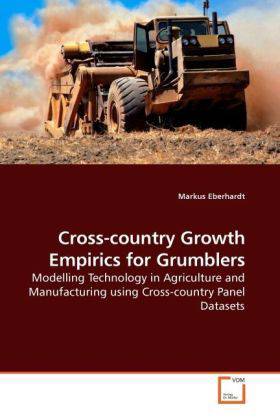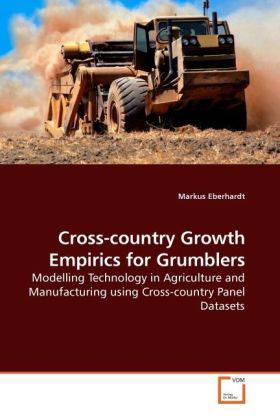
- Afhalen na 1 uur in een winkel met voorraad
- Gratis thuislevering in België vanaf € 30
- Ruim aanbod met 7 miljoen producten
- Afhalen na 1 uur in een winkel met voorraad
- Gratis thuislevering in België vanaf € 30
- Ruim aanbod met 7 miljoen producten
Zoeken
Cross-country Growth Empirics for Grumblers
Modelling Technology in Agriculture and Manufacturing using Cross-country Panel Datasets
Markus Eberhardt
Paperback | Engels
€ 77,95
+ 155 punten
Omschrijving
Why do we observe such dramatic differences in labour productivity across countries in the macro data? This thesis argues that the growth empirics literature oversimplifies the complexity of the production process across countries and neglects data cross-section and time-series properties, leading to bias in the empirical estimates. Chapter 1 presents two general empirical frameworks for cross-country productivity analysis and demonstrates that they encompass the growth empirics literature of the past decades. We introduce our central argument of cross-country heterogeneity in the impact of observables and unobservables on output and develop this against the background of the pertinent time-series and cross-section properties of macro panel data. Chapters 2 and 3 present empirical implementations for cross-country panel data for the manufacturing and agriculture sector respectively. Monte Carlo simulations in Chapter 4 investigate the performance of the standard (micro-) and novel panel estimators in the presence of nonstationarity, parameter heterogeneity and cross-section dependence. Our conclusion highlights the importance of these data properties for estimation and inference.
Specificaties
Betrokkenen
- Auteur(s):
- Uitgeverij:
Inhoud
- Aantal bladzijden:
- 240
- Taal:
- Engels
Eigenschappen
- Productcode (EAN):
- 9783639225594
- Uitvoering:
- Paperback
- Afmetingen:
- 150 mm x 220 mm
- Gewicht:
- 334 g

Alleen bij Standaard Boekhandel
+ 155 punten op je klantenkaart van Standaard Boekhandel
Beoordelingen
We publiceren alleen reviews die voldoen aan de voorwaarden voor reviews. Bekijk onze voorwaarden voor reviews.








